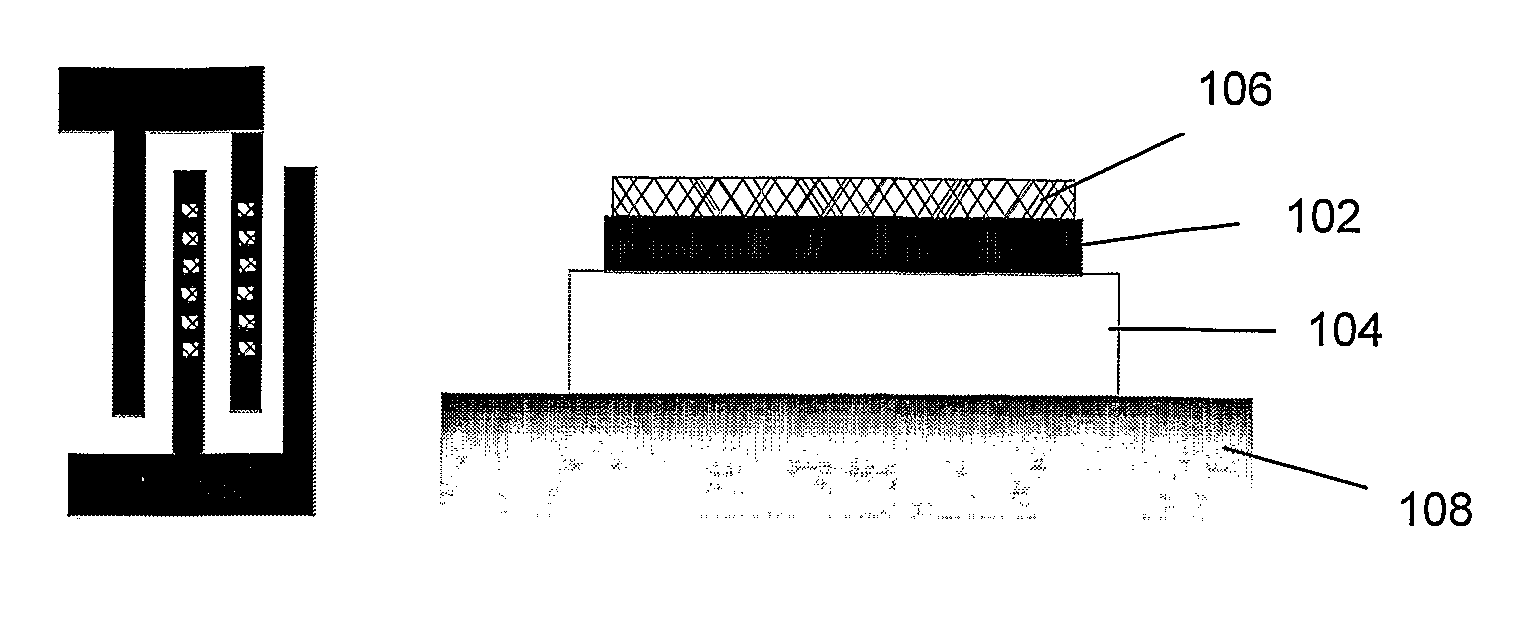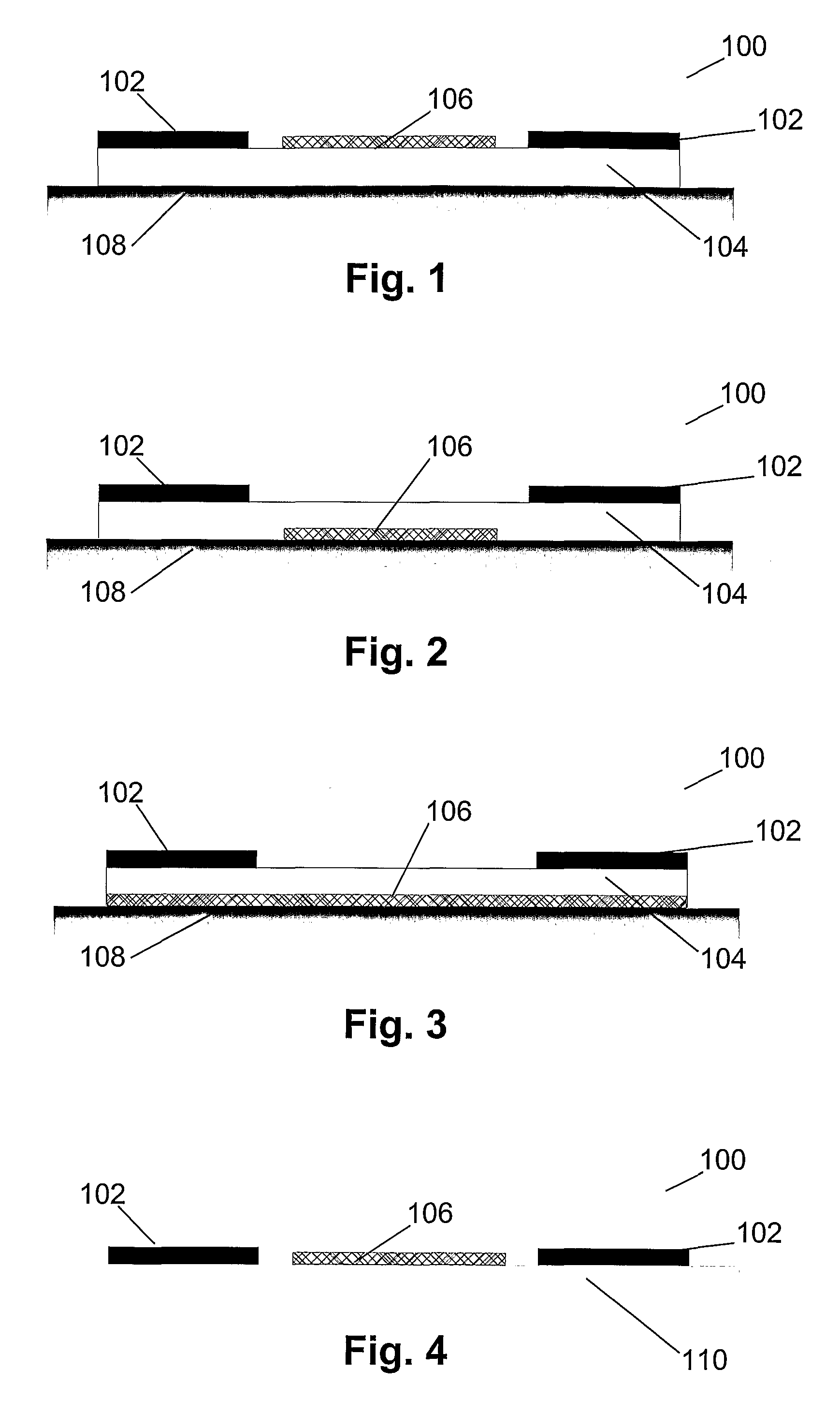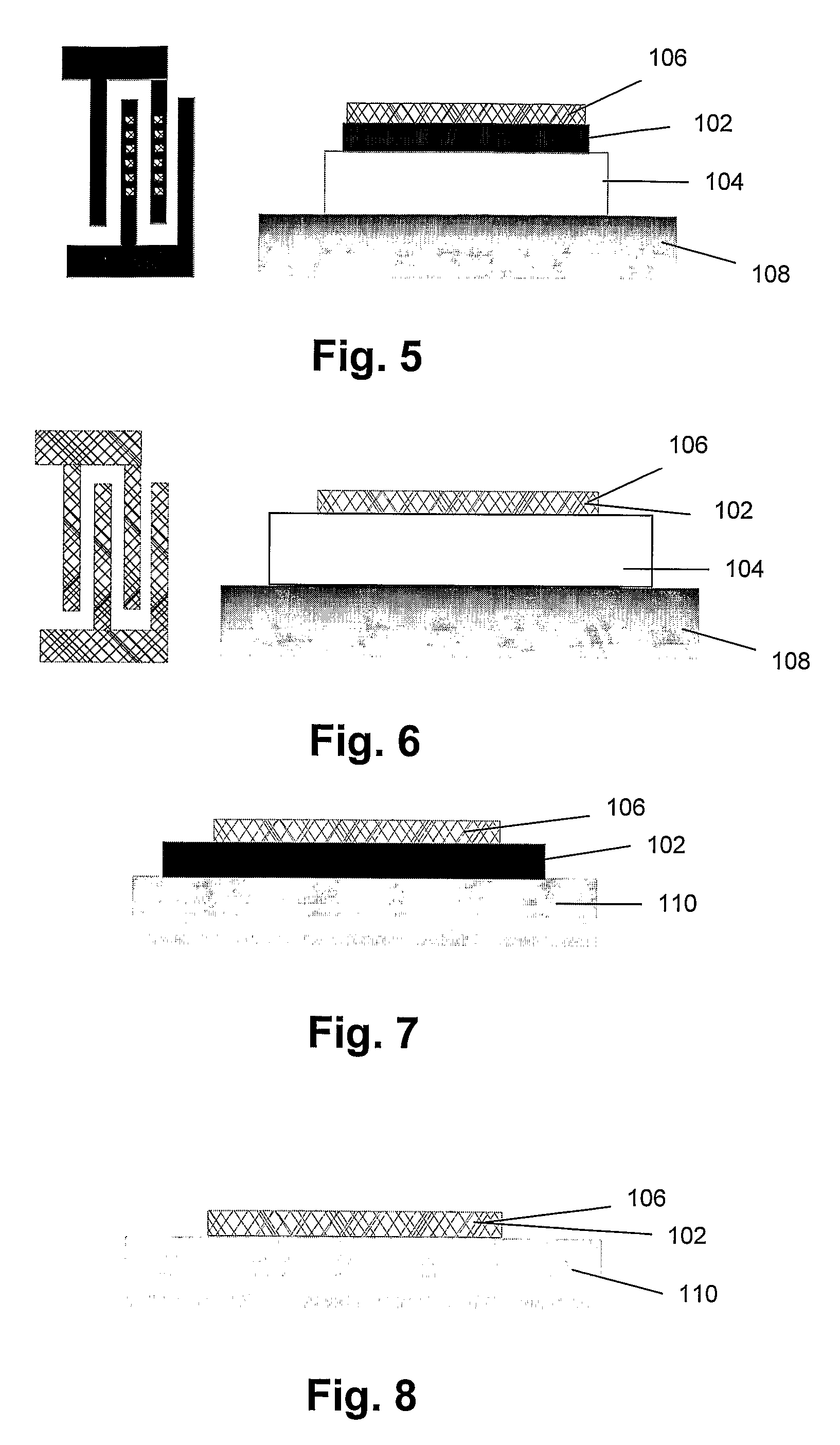Method for ultra-fast controlling of a magnetic cell and related devices
- Summary
- Abstract
- Description
- Claims
- Application Information
AI Technical Summary
Benefits of technology
Problems solved by technology
Method used
Image
Examples
Example
[0074] In a first embodiment a device 100 for switching and / or determining and / or manipulating and / or changing a magnetisation state of a ferromagnetic component is described. The device 100 comprises a surface acoustic wave (SAW) generating means 102, a transport layer 104 to allow propagation of the generated SAW and in which a SAW has the form of a stress and / or strain wave, and a magnetic element 106, also called magnetic cell or cell, whose state can be switched or determined or assessed using the stress and / or strain wave. Strictly spoken, the transport layer 104 is also part of the SAW generating means 102. Surface acoustic waves are generated by the SAW generating means 102 and need a material for their transfer, which is the transport layer 104. Therefore, the SAW generating means 102 and the transport layer 104 belong together. However, for the ease of explanation, in the further description, the SAW generating means 102 and the transport layer 1041 will be discussed separ...
Example
[0084] In a second embodiment, the invention relates to a device 100 for switching and / or determining and / or manipulating and / or changing a magnetisation state of a ferromagnetic component, comprising the same components and functionalities as described in the first embodiment, but wherein the magnetic element 106 is in direct contact with the SAW generating means 102, such as e.g. the IDT or wherein the IDT is itself the magnetic element 106 of interest. The magnetic element 106 in direct contact with the SAW generating means 102 may e.g. be deposited directly on top of the SAW generating means 102. Such configurations are depicted in FIG. 5 to FIG. 8. FIG. 5 indicates the configuration wherein a magnetic element 106 is deposited on top of a SAW generating means 102 whereas FIG. 6 indicates the configuration wherein the magnetic element 106 of interest is the SAW generating means 102 itself. In both configurations a transport layer 104 and a substrate 108 is present. FIG. 7 and FIG...
Example
[0086] In a third embodiment, a device 100 according to, i.e. having the same components as, any of the configurations described in the previous embodiments is provided, whereby the SAW generating means 102 can apply a shear SAW. A shear SAW, as depicted in FIG. 11a, is a surface acoustic wave that is launched by a SAW generating means 102, e.g. an IDT, and that makes the surface deform in a sinusoidal manner in plane (X-Y plane), generating a shear strain on every spot where the SAW passes. The magnitude of the shear strain, at given time and place, is depending on several parameters, from which the most important are the voltage applied on the SAW generating means 102 and the phase of the wave. So, a layer deposited in the path of the SAW, at its fixed location, senses a shear strain which changes in magnitude over time.
[0087] If this layer is a ferromagnetic layer, then the shear strain generates an effective magnetic field in the layer, as shown in FIG. 11b. As the magnetic ele...
PUM
 Login to View More
Login to View More Abstract
Description
Claims
Application Information
 Login to View More
Login to View More - R&D
- Intellectual Property
- Life Sciences
- Materials
- Tech Scout
- Unparalleled Data Quality
- Higher Quality Content
- 60% Fewer Hallucinations
Browse by: Latest US Patents, China's latest patents, Technical Efficacy Thesaurus, Application Domain, Technology Topic, Popular Technical Reports.
© 2025 PatSnap. All rights reserved.Legal|Privacy policy|Modern Slavery Act Transparency Statement|Sitemap|About US| Contact US: help@patsnap.com



